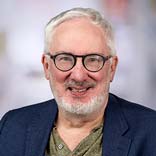Using Technology to Understand Cells' Bioenergetic Pathways
Cell proliferation is an essential component of normal growth and development, and as such, is highly regulated by hormonal and environmental factors. While our knowledge of cell cycle regulatory genes is advanced, the links between the cell cycle machinery and supply of metabolic intermediates required for cell division is less well understood. Measuring cellular energy flow helps to gain knowledge of the role of cellular metabolism in the development of disease and aging.
Cellular Bioenergetics maintains and runs the Seahorse XFE96 instrument for monitoring the bioenergetic state of cells in standard tissue culture. The Seahorse is available to Fred Hutch and external researchers. Learn more about how to access our services.

About Seahorse
The Seahorse XFE9624 Extracellular Analyzer is located in room D2-383 on the second floor of the Thomas Building. A dedicated room air incubator is kept adjacent to the Analyzer for pre-measurement equilibration. Experiments are designed using the XF Reader Software on a touch screen, and can be analyzed using Excel spreadsheets.
Cellular Bioenergetics Analysis Services
Measurements of O2 consumption and acid release are used to assess the bioenergetic state of cells. The recently acquired Seahorse XFE96 can be used to analyze the bioenergetic state of cells in standard tissue culture.
The Seahorse instrument is a multi-well plate-based assay platform that uses fluorescent optode detectors to measure oxygen consumption rates (OCR) and extracellular acid release (ECAR) from cells plated in custom 24-well plates.
Setting Up the Assays
Cells are assayed in a custom-prepared media lacking CO2/HCO3 or HEPES buffers, and equilibrated with this media for 1 hour prior to starting measurements. The Seahorse instrument maintains plate temperatures at 37°C. Above each well of the Seahorse 24-well plates are 4 cylindrical reagent reservoirs. The software permits programmable injection of each reservoir adding up to 4 different reagents during an experiment. The well size and alignment of the reservoirs matches a standard 96-well plate so that loading can be performed with standard pipettors. Plates and sensor cartridges are disposable to avoid cross-contamination from the sensors between experiments. A variety of established cell lines and primary cell types have been investigated with the Seahorse XFE96, including neurons, lymphocytes, and isolated mitochondria. Cell samples can be reused after measurements, including determinations of protein or cell number by Hoechst staining. Custom plates containing a central well depression and grid are suitable for study of whole islets.
Getting Started
- An initial meeting with resource staff is highly recommended to plan experiments in accordance with specific research goals.
- Staff will provide plates and sensor cartridges, prepare custom media, and analyze OCR and ECAR for investigator-provided cell samples.
- Standard reagents for measurements of mitochondrial coupling efficiency, mitochondrial reserve, respiratory control and substrate fuel utilization are provided. In addition, custom studies using a variety of metabolic inhibitors are possible.
- Resource staff will analyze data or provide instruction in using Seahorse software. Training on instrument can also be provided, for unassisted measurements.
- Scheduling for the Seahorse instrument can be made up to 2 weeks in advance.
Contact Us to Set Up a Service or With Questions

Mailing Address
Fred Hutchinson Cancer Center
P.O. Box 19024
Mail Stop D2-383
Seattle, WA 9819-1024